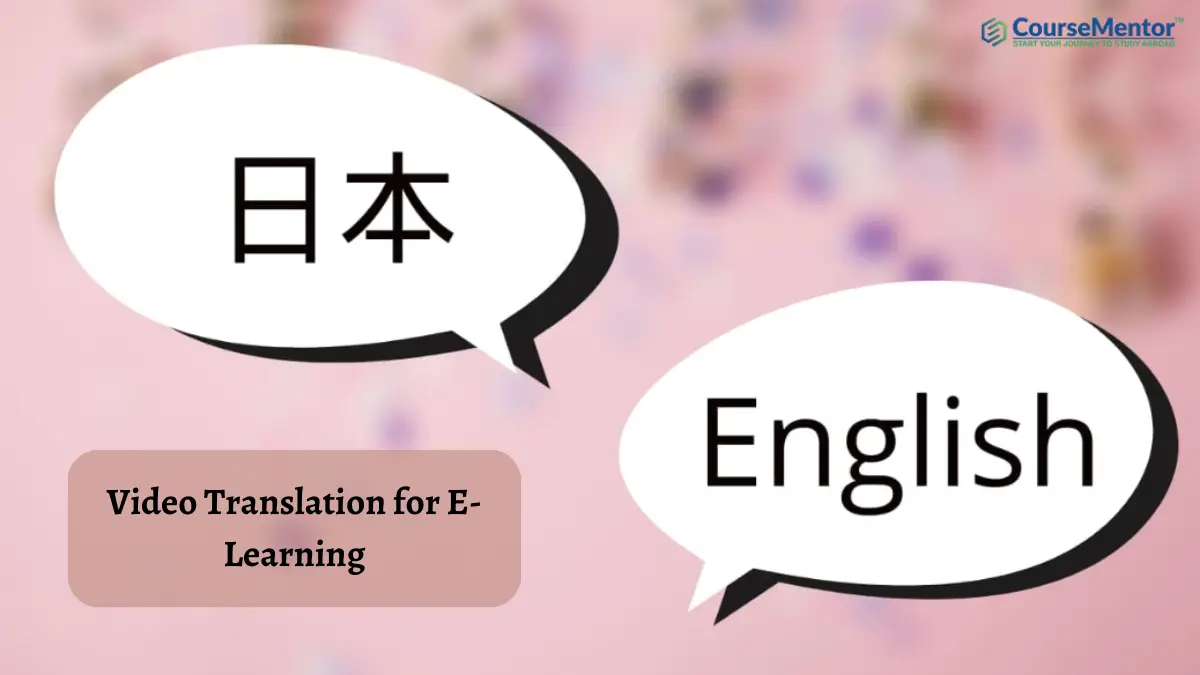In the digital age, e-learning has become an increasingly popular method for acquiring new skills and knowledge. Language learning, in particular, has greatly benefited from the advancements in technology, providing learners with interactive and immersive experiences.
Video translation plays a pivotal role in enhancing the language learning experience by bridging the gap between different languages and cultures. This article explores the significance of video translation in e-learning, with a specific focus on translating videos from Japanese to English. We will discuss the benefits of utilizing a Japanese to English video translator, emphasizing its impact on improving language learning outcomes.
It’s no secret that learning a new language is not easy. Even if you are very motivated and want to learn as quickly as possible, it can be difficult to find a way to practice often enough and make sure your skills don’t stagnate in the process.
One way to solve this problem is to use a Japanese-English video interpreter app. With this technology available at our fingertips, we have access to content such as newscasts or even full episodes of popular TV shows in real-time. This allows us to practice our listening skills while watching the things we enjoy – which we wouldn’t have been able to do before!
The Challenges of Language Learning: Translating Japanese to English
Learning a language is a difficult task, but translation can be even more difficult. The translation process must take into account the cultural context of both languages and ensure that meaning remains intact while retaining the style and tone of the original text.
Japanese is a complex language with distinct cultural nuances and a unique writing system. When it comes to language learning, translating videos from Japanese to English presents various challenges. The cultural context, idiomatic expressions, and pronunciation differences require careful attention to ensure accurate translations. Overcoming these challenges is crucial to providing effective language learning resources and facilitating comprehension for English-speaking learners.
The Benefits of a Japanese-to-English Video Translator
Utilizing a Japanese-to-English video translator, particularly one powered by AI, offers numerous advantages for e-learning platforms and language learners.
- Accurate Translations: Maintaining Linguistic and Cultural Nuances A Japanese-to-English video translator powered by AI excels in capturing the linguistic intricacies and cultural nuances of both languages. Advanced machine learning algorithms understand the context, idiomatic expressions, and cultural references, resulting in accurate and culturally relevant translations. This accuracy ensures that learners grasp the intended meaning and cultural context, fostering a deeper understanding of the Japanese language and culture.
- Enhanced Comprehension: Visual and Auditory Learning Video translation adds a visual and auditory component to language learning, enhancing comprehension and engagement. By providing translated subtitles or voice-overs, a Japanese-to-English video translator allows learners to associate spoken words with their written counterparts, aiding in vocabulary acquisition, pronunciation, and sentence structure. The combination of visual and auditory cues facilitates a more immersive and comprehensive language learning experience.
The Impact on Language Learning Experience
The use of a Japanese-to-English video translator in e-learning has a significant impact on the language learning experience, leading to improved outcomes and learner engagement.
- Cultural Immersion: Connecting Learners to Japanese Culture Video translations enable learners to explore and immerse themselves in Japanese culture. By accurately translating videos, learners gain insights into Japanese customs, traditions, and everyday life. This cultural immersion fosters a deeper appreciation and understanding of the language, promoting a more holistic language learning experience.
- Authentic Learning Materials: Real-life Language Usage Video translations provide learners with authentic learning materials, showcasing real-life language usage, and scenarios. This exposure to natural conversations, dialogues, and cultural references helps learners develop their listening skills, adapt to different accents and dialects, and understand informal expressions. Authentic learning materials create a bridge between language learning and real-world application, preparing learners for practical language use.
We believe that a video translator from Japanese to English is the best way to learn a new language. Video translation plays a crucial role in improving the language learning experience in e-learning platforms, particularly when translating videos from Japanese to English. Leveraging a Japanese-to-English video translator, powered by AI, offers accurate translations that maintain linguistic and cultural nuances.
The visual and auditory components of video translation enhance comprehension and engagement, while cultural immersion and authentic learning materials provide learners with a holistic language learning experience. As technology continues to advance, the future of video translation in e-learning holds tremendous potential in further enhancing language learning outcomes and promoting global linguistic and cultural understanding.
Using video interpreting services in an e-learning environment can help students learn to speak Japanese and understand the culture behind it. It is important for students not only to learn how to pronounce words correctly but also to understand their meaning, so using a service that provides both subtitles and voice-over narration is ideal.
Also Read: Best Vocational Courses After 12th In 2023


